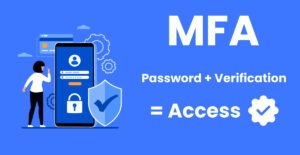What are SPF and DKIM Records?

In the digital age, email security is paramount. SPF (Sender Policy Framework) and DKIM (DomainKeys Identified Mail) are two essential email authentication methods that help protect your domain from email spoofing and ensure your emails reach their intended recipients. This post will explore the definitions, purposes, and creation processes for both SPF and DKIM records.
SPF Records
Definition of SPF
SPF (Sender Policy Framework) is an email authentication method designed to detect and prevent email spoofing. It allows the owner of a domain to specify which mail servers are permitted to send email on behalf of their domain.
Purpose of SPF Records
The primary purpose of SPF records is to prevent spammers from sending messages with forged “From” addresses at your domain. By defining which mail servers are authorized to send emails from your domain, SPF helps improve your email deliverability and protects your domain’s reputation.

Mail Providers That Require SPF Records
Several major email providers refuse mail without a defined SPF record, including:
- Gmail
- Yahoo Mail
- Microsoft Outlook/Office 365
- AOL Mail
- Zoho Mail
Creating SPF Records
To create an SPF record, follow these steps:
- Identify Your Sending Domains: Determine which domains you send email from.
- List Authorized IP Addresses and Domains: Identify all IP addresses and domains authorized to send email on behalf of your domain.
- Create the SPF Record: Formulate your SPF record in the following format:makefileCopy code
v=spf1 ip4:xxx.xxx.xxx.xxx include:domain.com -allv=spf1specifies the SPF version.ip4:xxx.xxx.xxx.xxxis an authorized IPv4 address.include:domain.comallows mail from another domain.-allsignifies that only the specified IP addresses and domains can send emails.
- Add the SPF Record to Your DNS: Log in to your DNS management console and add a new TXT record with the SPF information.
- Test the SPF Record: Use tools like MXToolbox or SPF Record Checker to ensure your SPF record is correctly configured.
DKIM Records
DKIM (DomainKeys Identified Mail) is an email authentication method that allows the recipient to check that an email was indeed sent and authorized by the owner of that domain. It uses cryptographic authentication to provide a higher level of security.
Purpose of DKIM Records
The primary purpose of DKIM is to prevent email tampering and to verify the legitimacy of an email message. By adding a DKIM signature to outgoing emails, you can ensure that your emails have not been altered in transit and that they are from a verified sender.
Creation
To create a DKIM record, follow these steps:
- Generate a DKIM Key Pair: Use your email service provider’s tools or a DKIM key generator to create a public/private key pair.
- Publish the Public Key in Your DNS: Log in to your DNS management console and add a new TXT record with the DKIM information.
- The TXT record name (selector) will look something like
selector._domainkey.yourdomain.com. - The value of the TXT record will be your public key.
- The TXT record name (selector) will look something like
- Configure Your Mail Server: Update your mail server settings to sign outgoing emails with the private key.
- Test the DKIM Record: Use tools like DKIMCore or MXToolbox to ensure your DKIM record is correctly configured.
Conclusion
Implementing SPF and DKIM records is crucial for maintaining your domain’s email security and ensuring your emails reach their intended recipients. By following the steps outlined in this post, you can protect your domain from email spoofing and improve your email deliverability.
Contact us if you need assistance!


